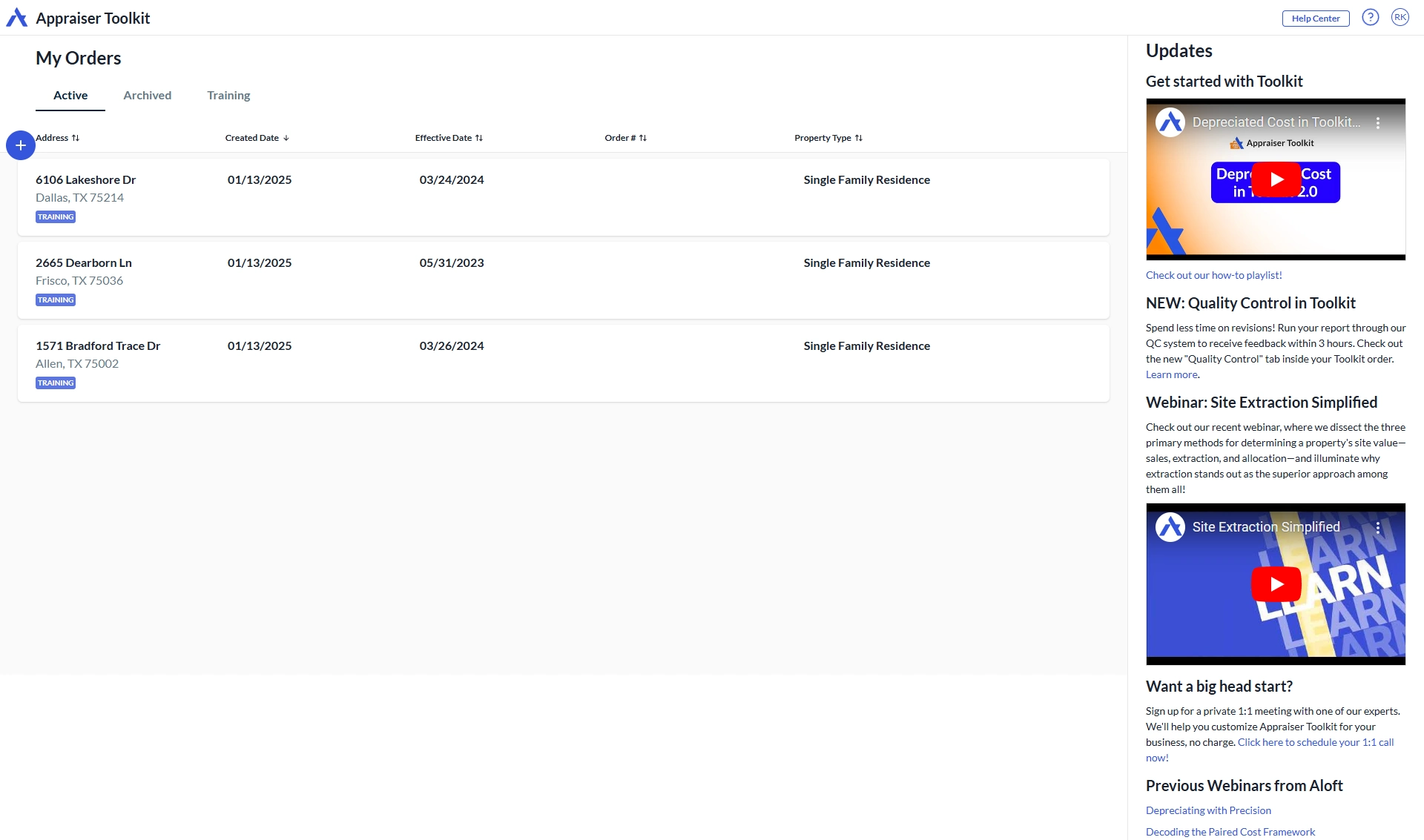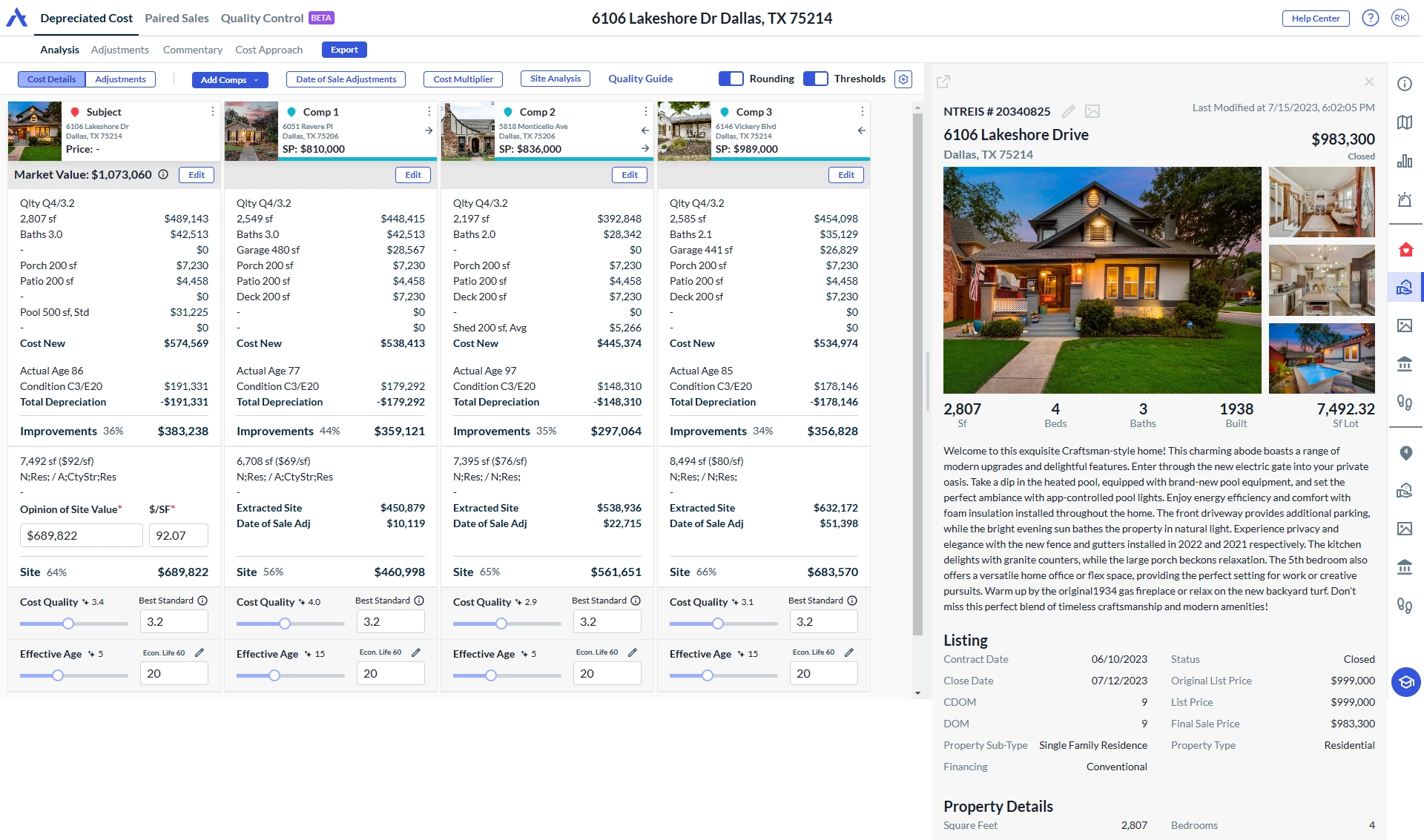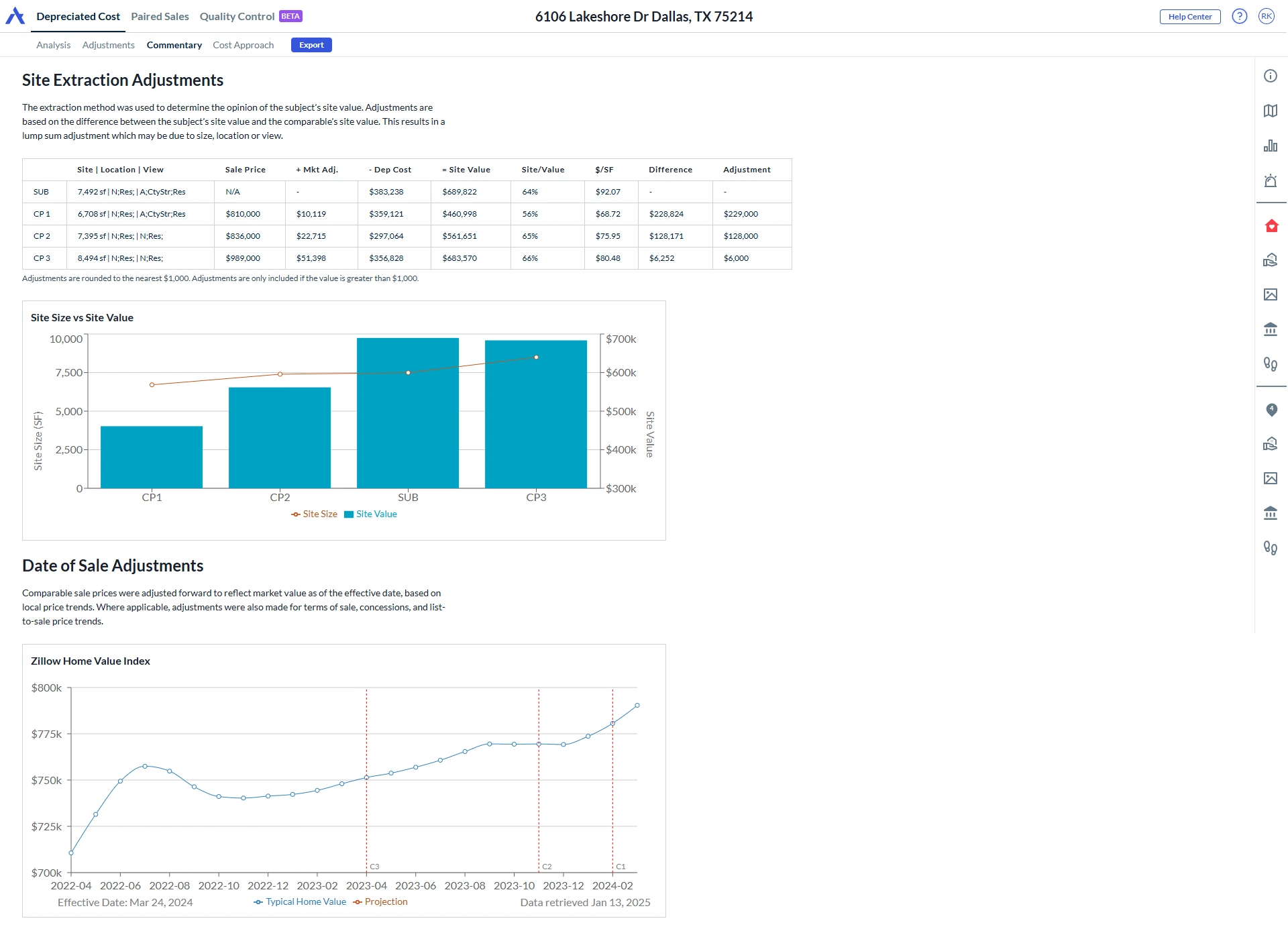
Aloft Appraisal
The real estate appraisal industry struggles with outdated processes, appraiser subjectivity, and inherent biases, all of which can distort property valuations.
Role & ownership
I served as the Senior Product Designer, collaborating with an entry-level designer, two product managers, and a team of engineers.
- Aloft's Toolkit: A React-based B2B SaaS web app, leveraging Chakra UI for front-end components, to streamline the traditional, non-data-backed approach to home valuations.
- Design reviews: Led weekly sessions to gather feedback, align on design direction, and foster cross-functional collaboration.
- 'Sound UI' design system: A Figma-based system featuring components, icons, typography, and brand palettes, ensuring consistency and enhancing collaboration.
- User Research: Conducted 1:1 interviews with new and expert appraisers, surveys using Google Forms, LogRocket recordings of user behavior, and intake and response of feedback from a Chatbot and Zendesk.
Product state
When I started in May '23, the product was transitioning from a broad focus that covered all appraiser workflows to addressing key pain points, such as:
- Enhancing efficiency to expedite the completion of appraisals
- Improving the accuracy of adjustments
The challenge
Modernizing traditional appraisals
Aloft's Toolkit aimed to modernize the appraisal process by streamlining workflows, simplifying data input, and enhancing efficiency for both new and experienced appraisers.
kickoff
Surveying the landscape
The real estate software app space is notoriously fragmented and complex. It's characterized by:
- Change Resistance: Industry professionals stick to familiar but dated tools.
- High Barriers: Complex regulations and relationships block new entrants.
- Legacy Systems: Disconnected platforms that don't integrate.
The appraiser profession has seen a 3% annual decline since 2019. This trend highlights the need to attract new talent and adapt to changing market conditions.


Problem statement
The $12 billion real estate appraisal industry is plagued by time-consuming, inaccurate, and subjective processes. With 7.5 million U.S. home sales and refinances requiring appraisals annually, there's a clear opportunity to streamline the process and improve accuracy through better design.
customer profile & Goals
Demographic
Average Age: 53
Gender: 66% male
General attitude: Complacent with traditional tools and training, but open to efficiency improvements.

Goals & metrics
- Reduce appraisal time to under 1 hour
- Automate 80% of report with AI & third-party data
- Improve home valuation accuracy by N%
discovery
Customer insights
I conducted the majority of the UXR using the following methods:
- Expert Reviews: Collaborating with SMEs, in-house, and external appraisers for feedback on designs and beta builds.
- Retrospective UXR: Sending emails and surveys to early subscribers, lapsed, and unsubscribed customers
- Passive observation: Reviewing user session replays via LogRocket identifying:
- Abandonment
- Form or Input Errors
- Navigation Issues
- Performance Issues
- UI/UX Confusion
Insights to action
Research insights informed mock-ups, reviewed with the Product team. Our process included:
1. Streamlined order placement with inline help for user guidance

2. AI-populated fields with auto-calculations for enhanced efficiency and accuracy

3. Auto-calculations, color coding, and public records in a dynamic pane to reduce context switching

4. A visual-first approach to support decision-making

5. Flexible export options to support diverse workflows and applications

Impact
Results of my UX/UXR
Aloft's Toolkit aimed to modernize the appraisal process by streamlining workflows, simplifying data input, and enhancing efficiency for both new and experienced appraisers.